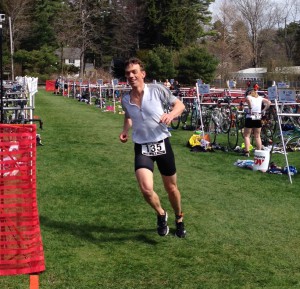Within the past ten years, I figure I’ve aged about ten years. The first five years, I aged about six years. But I only aged four during the most recent five years.
I grew up in a family of long distance marathon runners. It was unconditional—exercise meant running. Images of Bill Rogers frequented the Runner’s World magazines that were on the coffee table. The runner’s badge of honor was a clinical condition called bradycardia, a Latin word translating as “slow heart”, aka an uncommonly slow pulse rate. This was a convenient effect from running because at the time, forty years ago, the thought was that a slow pulse indicated a healthier heart.
But experience, time and science has caught up. Slower pulses and the dilated enlarged thin-walled hearts that occur in long distance runners are not beacons of health and fitness. In fact, death from cardiac arrest is not uncommon in these long-distance athletes at all ages.
From 2007 to 2012, I was putting my endurance exercise together in short triathlons. Now don’t get me wrong, I don’t think this was or is inherently un-healthy, but hindsight shows me that it did not provide the fitness I value. Furthermore, my blood sugar was poorly controlled compared to now.

What changed from 2013? I exercise and improve my heart rate variability and heart rate recovery doing short high intensity interval training (HIIT) and I build strength several days per week doing strength oriented circuits. I have in fact gained weight doing this, about ten pounds, but my body fat has remained remarkably low, which means 90 percent of all the gained weight is muscle and the connective tissue that arrives with it.
Here’s how my new routine looks.
HIIT: Twice per week – I will be on a bike or running sprints. This will be a slow warm up pace, and I mean slow, for 5 to 15 minutes. Then I do a burst of sprint pace that I can only maintain for about 20-30 seconds. I will go slowly again to recover for about 90 seconds or more before repeating. I will repeat this cycle about five times. This is my current favorite style and works with my goals and gets me outside, but this can be easily transferred to any exercise machine. (I did write more about HIIT here)
Strength: Three per week – These workouts are “circuits”—sets of several exercises that are repeated. I usually choose five to seven individual exercises that cover the major movements like pull – push – squat – lunge. The circuits take about 5-7 minutes each to complete and I will go through them two to three times. The important thing here – is that it is not long. These are challenging workouts and 20-25 minutes is my “max”. In reality, there are days that I only go through this circuit once then stop for some reason or another. But I know, for a fact, that five to seven minutes is VASTLY better than zero.
The individual exercises in my circuits are from what Jeff Eckhouse and I prepared together for the Metabolic Recovery Fitness Program (downloadable video is here). The form and movements are still integral parts of my routine.
A couple other days a week I will go for a bike ride that might last 1-2 hours, or play squash, or dance. My Three weekly workouts help define better form and strength, which impacts how I move in other activities. I am less prone to injury and use more muscles even daily activities.
How much is too much? Evidence has helped us see that strenuous long endurance activity catabolizes the body at a high rate. A rate which cannot be managed long term. Under-recovery is the real culprit to the words “over-exercising”. Therefore, injuries do not properly heal. Inflammation becomes chronic. And long-term, ligaments and cartilage do not regenerate. The specialized cells that allow our body to truly recover and repair throughout our lives, cells called stem cells, can die off in an over-exercised environment. Art Devany touches on this in my quick interview with him here – His book of ten years ago, The New Evolution Diet is interesting to me still.
Ultimately it should look like how kids play. I am not afraid of doing long endurance activity. But when I do something that will last more than 1-2 hours, I allow more recovery times during the event with many periods at a slower recovery pace. Like a daylong hike or mountain bike ride with stops at the good views. I no longer do the 2-3 hour lycra-laden fast pace rides. Intervals mean that when my heart rate does reach 80-100% of my output, I am there for only seconds—sustaining activity at this high output is more damaging than most of us can properly recover from.
Is technology useful? I will use technology at times and many of you have had your heart rate variability done in my office. A healthy heart is one that recovers quickly from exertion and good variability from beat to beat. I use an app called Elite HRV and a simple Bluetooth Heart Rate Monitor by POLAR, the H7.
Does this sound all too serious and no fun? Fortunately, it’s not all HIIT and circuits in the gym. I am in the gym because I love to do other stuff—racquet sports – walks – dancing – bike rides – skiing – pond hockey – anything that playfully gets me out of a chair and active outdoors is a good thing.
Please don’t look at my personal list of activities as a prescription for you. Rather, I hope to share it as a fellow traveler. One who is also on a journey toward health, longevity, true fitness and optimal human performance.



Comments are closed.